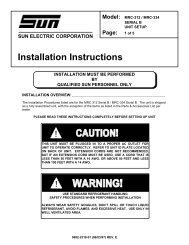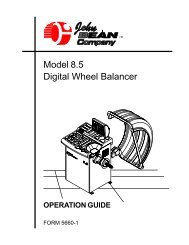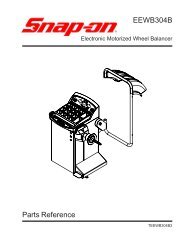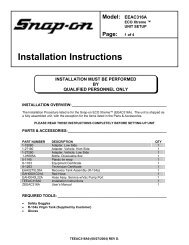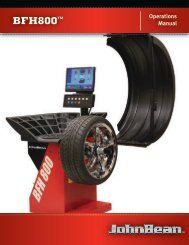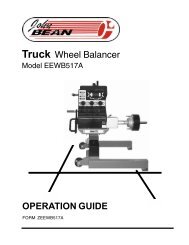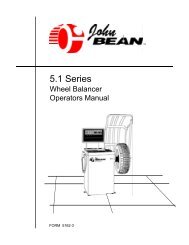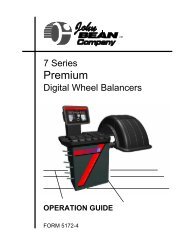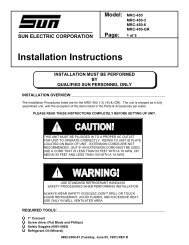Operating Instructions - Snap-on Equipment
Operating Instructions - Snap-on Equipment
Operating Instructions - Snap-on Equipment
You also want an ePaper? Increase the reach of your titles
YUMPU automatically turns print PDFs into web optimized ePapers that Google loves.
Safety Informati<strong>on</strong>Risk of fire.• Be aware that many systems maintain residual pressure inthe line after the engine is turned off.• Wipe up fuel spills immediately.• Turn vehicle off before c<strong>on</strong>necting or disc<strong>on</strong>nectingequipment.• Keep shop rags, towels, paper, oils, fuel, plastics and othercombustible materials clear of vehicle exhaust andevacuati<strong>on</strong> hoses.• Keep a dry chemical (Class B) fire extinguisher rated forgasoline, chemical and electrical fires in the work area.Flames can cause serious injury.Risk of expelling fuel, oil vapors, hot steam, hot toxic exhaustgases and other debris.• Wear safety goggles and protective clothing, user andbystander.• Engine systems can malfuncti<strong>on</strong> expelling fuel, oil vapors,hot steam, hot toxic exhaust gases and other debris.Fuel, oil vapors, hot steam, hot toxic exhaust gases, and otherdebris can cause serious injury.Risk of burns.Do not remove radiator cap unless engine is cold.Pressurized engine coolant may be hot.Hot engine coolant can cause serious burns.Risk of burns.• Do not touch hot exhaust systems, manifolds, engines,radiators, sample probe, etc.• Wear gloves when handling hot engine comp<strong>on</strong>ents, suchas PCV and EGR valve.• Wear gloves when handling hot exhaust sample probe.Hot comp<strong>on</strong>ents can cause burns.The engine compartment c<strong>on</strong>tains electrical c<strong>on</strong>necti<strong>on</strong>s and hotor moving parts.• Do not place test equipment or tools <strong>on</strong> fenders or otherplaces in the engine compartment.• Keep yourself, test leads, clothing and other objects clearof electrical c<strong>on</strong>necti<strong>on</strong>s and hot or moving engine parts.• Keep hands, feet, clothing and test equipment away frommoving parts.• Barriers are recommended to help identify danger z<strong>on</strong>es intest area.C<strong>on</strong>tact with electrical c<strong>on</strong>necti<strong>on</strong>s and hot or moving parts cancause injury.III



